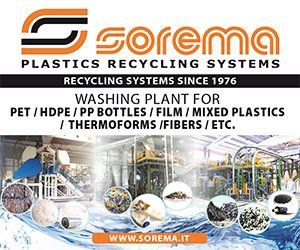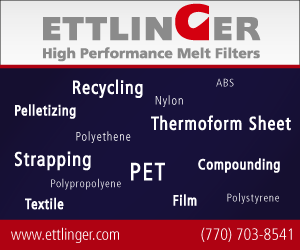 Some PET bottle resins tend to yellow more than others when recycled, especially those containing multiple layers. One expert has offered a solution: Incorporate them into a stream used for amber-colored plastics.
Some PET bottle resins tend to yellow more than others when recycled, especially those containing multiple layers. One expert has offered a solution: Incorporate them into a stream used for amber-colored plastics.
“The goal is to find a way to allow clear, but problematic bottles, that yellow when recycled to benefit an amber recycling stream,” Frank Schloss of Plastic Technologies, Inc. (PTI) stated in a press release. “It’s possible that yellowing can be offset by blending them with amber-colored bottles to yield an acceptable amber color for reuse.”
Ohio-based PTI works with brand owners to create packaging and find solutions to challenging packaging issues. It has capabilities in design, prototyping, materials evaluation, preforms and more.
In a recent white paper on the topic, Schloss noted that more research would have to be done to determine the feasibility of the amber stream. He also pointed out that the amber PET market needs to grow before reclaimers can begin targeting the material in its own stream. But he proposed a potential solution to a problem that challenges today’s clear PET reclaimers.
In today’s recycling markets, only clear and lightly tinted blue PET containers have strong end-market values, according to the analysis. Some clear bottles are problematic, however, because they incorporate multiple layers or oxygen scavengers to boost shelf life.
While even virgin PET will tend to yellow through repeated melt cycles, those problematic containers will accentuate the yellowing, Schloss wrote. Additives are available to counteract the yellowing, but those add costs and, if used at too high of a level, reduce PET brightness.
Potential in beer and drug markets
Meanwhile, amber PET containers aren’t yet prevalent enough in the market for most reclaimers to justify establishing a separate amber PET stream. They’re currently used in the soft drink, beer bottles and pharmaceutical markets. Amber PET is used in beer bottles because beer is a light-sensitive product.
“If amber PET pharmaceutical and beer packaging usage increases, the reclaimers will eventually face the need to develop an outlet for this material,” according to the report.
If that happens, the potential to add problematic clear PET containers to the amber stream would emerge.
Schloss cautioned that much remains to be studied in terms of using problematic clear PET in recycled amber PET. And he noted the varying composition of amber PET bottles produced by different converters.
“Rigorous performance testing would need to be done to understand how the incorporation of these types of non-colored PET bottles might impact such an amber recycle stream,” according to the report.
But Schloss argued that now is the time to begin addressing the issue.
“The goal is how best to handle an amber colored bottle stream in the future so that amber can add value to the reclaimer’s operation rather than detracting from it,” he concluded.
More stories about challenging materials
- Unifi pushes for textile recycling progress
- PET Recycling Coalition doubles down on thermoforms
- RIT researchers develop AI-based textile recycling system



